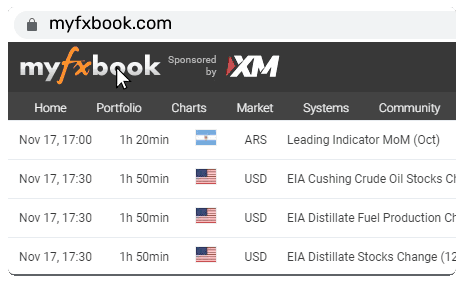EURUSD Forecast for the Coming Months
SHORT TERM → TARGET: 1.0640
I see EUR/USD trading in a range of 1.0450 to 1.0760. Developments in the interest rate markets continue to be the driving force behind price movements. Various statements by ECB representatives (more on this in the Medium-Term Outlook) have led to a roller coaster ride this week. It's surprising because currency rates tend to be "boring" during central bank meeting weeks. However, the Bank of Japan also caused some unease in the market, and speculation about currency market intervention may have ended as the Bank of Japan announced that it did not intervene from late September to late October. Looking ahead to today's Fed meeting, the probability of another rate hike is close to zero. The subsequent press conference by Fed President Jerome Powell will (hopefully) provide more clarity.
The war in Israel, 3.5 weeks after the first Hamas attack, does not seem to be a major concern for the financial markets for now, as the conflict continues to be seen as a local one. The ground offensive, which was seen as a major escalation a few weeks ago, took place over the weekend and had no impact on the safe-haven currencies. However, if the conflict escalates, the effect that has not yet materialized will occur, and the USD and other safe-haven currencies will benefit. Sadly, the market seems to have a certain routine when it comes to war.
In about two weeks' time, the threat of a U.S. government shutdown will once again be on the market's agenda. However, after weeks of bickering, the election of House Speaker Mike Johnson has reduced the likelihood of a government shutdown. There is still a risk of a government shutdown in early 2024, as the temporary extension of the spending bill until November 17 is unlikely to resolve the underlying political disagreements.
From a chart perspective, EUR/USD bounced off the 50-day line twice during the corrective move (Oct 24-31) and failed to make new short-term highs. The 50-day is currently at 1.0643, which has pushed the EUR/USD back below the 1.06 level. We expect the 50-day to be breached in the medium term, with 1.0690 (October 2023 high), 1.0760 (38.2% Fibonacci level), and 1.0810 (100-day & 200-day) as the next targets on the upside. On the downside, the 2023 low at 1.0448 and the two-week low at 1.0520 support the EUR/USD. It should be noted that today is the Federal Reserve meeting, and if it surprises in either direction, the technical analysis should be taken with caution.
Resistance: 1.0690 // 1.0760 | Support: 1.0520 // 1.0450
MIDDLE TERM → TARGET: 1.0900
In the world of central banks, it appears that the Federal Reserve has likely reached its peak interest rate at 5.5%. On the other side of the spectrum, there seems to be a difference of opinion within the ECB regarding rate hikes. Notably, Slovak and Lithuanian ECB representatives, Kazimir and Simkus, expressed their opposition to early rate cuts on Monday. In contrast, the Greek representative, Stournaras, mentioned in a Handel blatt interview that he could envision rate cuts if inflation "falls below the three percent threshold on a sustained basis," possibly as early as mid-2024.
Shifting our focus to inflation, I've discussed the decline in recent issues, and now, inflation in Germany has dropped even more than economists had anticipated. In October, annual inflation was at +3.8%, remaining unchanged monthly. This was below expectations of 4% annual and 0.2% monthly inflation. Chief Economist Holger Schmieding from Berenberg commented in the FAZ, "German inflation is falling almost as fast as it rose to its peak in the fall of last year. Below the line, it turns out that other European countries also have favourable inflation outcomes. The Netherlands, for instance, even reported negative inflation, at -0.4% on an annualized basis published yesterday. This direction is encouraging and eases some pressure off the ECB.
In terms of the economy, German GDP has contracted once again in the third quarter. Compared to the previous quarter, GDP declined by 0.1%, marking a negative trend in 3 out of the last 6 quarters since the spring of 2022. Looking ahead to the coming year, there are differing views between the government and economic institutes, with expectations of 1.3% growth. However, most bank economists anticipate only 0.5% growth due to the weak global economy hampering German exports. Alongside weak exports, there's also a noticeable reluctance to spend, possibly due to the impact of inflation on savings.
In the political arena, turmoil continues to unfold. The Russia-Ukraine war seems to have faded from the media spotlight, while UN representatives announced a resolution not to condemn terror in Israel, leading to a division within the UN. This division has escalated to the point where Czech Defence Minister Jana Cernochova has called for her country's withdrawal from the UN, citing it as an "organization of terrorist supporters." Germany's abstention from the UN resolution has also sparked tensions. Additionally, developments between China and the US remain intriguing. White House press secretary Karine Jean-Pierre has indicated that President Joe Biden will meet with Chinese leader Xi Jinping on the sidelines of the Asia-Pacific Economic Cooperation summit in San Francisco in November.
LONG TERM → TARGET: 1.1200
The EUR experienced a rise to 1.1200 in the middle of the year but later dropped below 1.0700. My earlier prediction for this year-end price level was contingent on the assumption that no new catastrophes would drive investors toward the USD, which, as of now, has not materialized. This was partly due to the optimistic U.S. inflation outlook, as the impact of the Fed's interest rate policy became evident. However, it's essential to note that the Federal Reserve initiated the interest rate cycle much earlier than the European Central Bank, and as a result, central bank decisions and economic indicators continue to influence the currency pair in the short and medium term, limiting the euro's potential. Nevertheless, as the interest rate gap between the United States and Europe narrows in the coming year, and the US dollar loses its status as a safe-haven currency, I anticipate the currency market will stabilize, and the euro will likely appreciate once again. In the long term, the risk of high US government debt and potential difficulties with debt refinancing could result in a considerably weaker US dollar.
The war in Ukraine has taken a backseat in the financial markets, with interest rate developments in specific regions now taking the primary focus. If the war were to end soon, it could have a positive impact on Europe, with simplified food supply being one of the first effects. Ukraine has already become more self-reliant in this regard. The reconstruction of Ukraine would also be a significant benefit for Europe, potentially stimulating the EU economy and acting as an economic stimulus program. The ECB's interest rate decisions may be noteworthy in this context, as higher interest rates could increase the cost of reconstruction. Additionally, the upcoming U.S. presidential election in November 2024 is already influencing market dynamics. Generally, the Fed tends to avoid creating headlines and being excessively visible during this period, so we anticipate a more expansionary monetary policy from the Fed, suggesting a weaker U.S. dollar (risk-on).
Looking at the economic landscape, after the eurozone economy contracted by 0.1% quarter-on-quarter in both Q1 2023 and Q4 2022, economists now expect only a slight +0.5% increase in GDP for 2023. On the U.S. side, economists no longer foresee a "mini" recession but rather anticipate a soft landing. However, they still expect negative growth of -0.4% for Germany. In terms of inflation, my forecasts for 2023 remain on the downside at 5.6% for the eurozone, 6.3% for Germany, and 4.1% for the USA. While the general economic environment has improved significantly, geopolitical risks, such as tensions between China and the USA regarding Taiwan, always loom in the background. In uncertain times, investors tend to seek safe havens like the U.S. dollar. Coupled with higher interest rates for longer, it appears unlikely that the U.S. dollar will experience a significant weakening above 1.1200 by the end of the year.
This content may have been written by a third party. ACY makes no representation or warranty and assumes no liability as to the accuracy or completeness of the information provided, nor any loss arising from any investment based on a recommendation, forecast or other information supplied by any third-party. This content is information only, and does not constitute financial, investment or other advice on which you can rely.



















